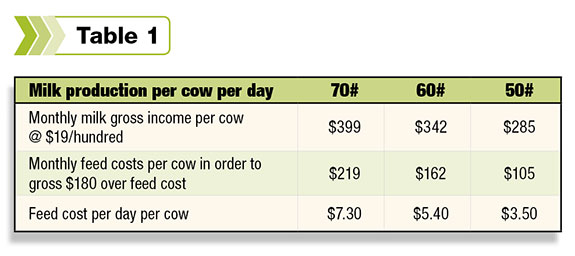In the dairy industry there are many tools available to the individual dairyman. There are operational tools such as nutritionists, TMRs, DHIA, A.I. breeding, sexed semen, calving- ease bulls and whether to milk twice, three or four times daily. The list goes on and on.
Tools for financing the dairy operation are generally more limited. Dairy cattle leasing is one of the tools available to enhance the profitability of the dairy operation.
Its purpose is to increase cash flow. Other than conventional financing, dairy cattle leasing can be an option to maximize dairy potential and efficiency and increase bottom-line cash flow.
It works best in operations that already have their facility, equipment, feed, labor, family and overall dairy setup in place. Filling up the barns to full capacity will capitalize on the operational efficiency of the facility and empower the cash flow potential of the dairy.
Lessors generally want the dairy to incur limited additional expenses with the leased cattle. The primary additional expenses would be the feed and lease cow payments.
Although expenses such as supplies and breeding exist, feed and cow payments would be the largest expenses. They dictate the beneficial gross cash flow of milk income over expenses with the additional cattle.
For dairies to lease cattle, they should have an increase per cow income over feed cost of approximately $180 per head per month on the lease cows. Gross milk income per cow will vary according to dairy per-cow production levels and daily feed costs per head.

The dairyman must know these figures. The higher the daily milk production is per cow, the higher the daily feed costs can be for leasing to improve monthly cash flow.
Table 1 has guidelines that show the variances that will exist depending on milk production and feed costs.
As you can see, dairy cattle leasing doesnât work very well for low-producing herds unless they are getting $24-$25 per hundredweight for their milk. With lease cattle, the dairyman should have a cash flow increase per month per head of approximately $80-$100 after feed cost and lease payment.
If that is the case, it can serve a dairyman very well to fill up stalls to capacity and increase his monthly cash flow by $80-$100 per head of lease cows. After the miscellaneous costs of supplies and breeding, the dairyman can dramatically improve bottom-line monthly cash flow. Leasing can work well in the right situation.
The approval process is generally much simpler and the time period much shorter for adding lease cows than standard bank financing. A well-managed dairy can have additional cows producing additional net cash flow in as little as two weeks, avoiding complicated bank loan processing procedures.
Crunch your numbers to decide if dairy cow leasing will improve your bottom-line monthly cash flow. PD
Find out more about leasing dairy cattle, click here to visit Blevinsâ website.

Jeff Blevins
Owner and Manager
Sunshine Heifers LLC
(602) 768-6678





